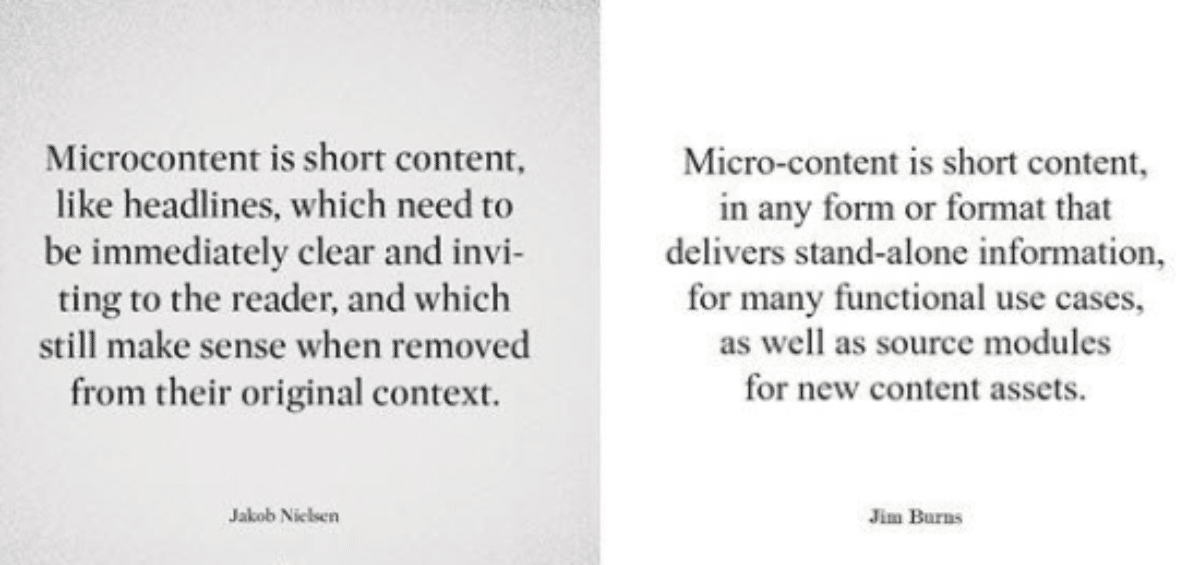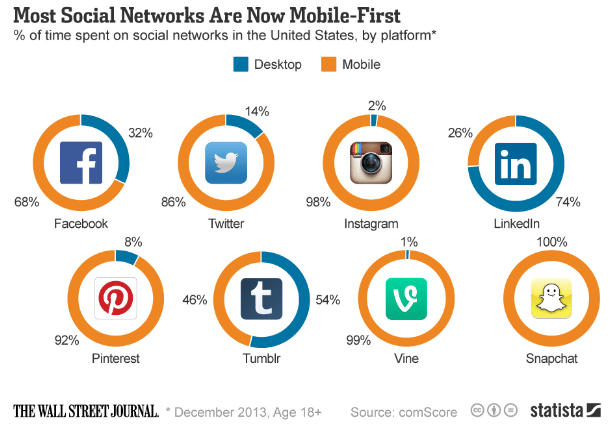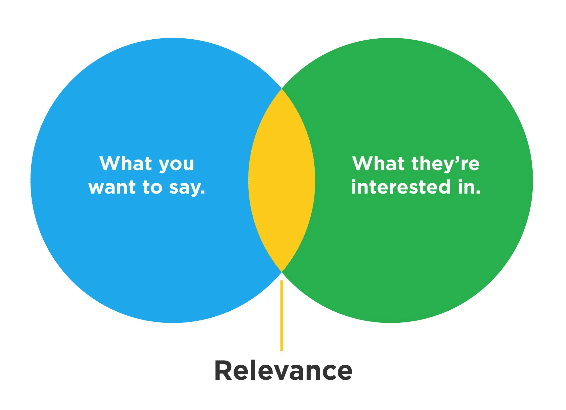The term “microcontent” refers to short-form content that is usually intended for social media. Used properly, it serves as a high-value and potent form of content marketing. Microcontent also has the advantage of being easy and inexpensive to create and implement.
Essentially, microcontent is short. It can stand alone by itself and still make sense to the reader without having to read any of the information around it. Microcontent should serve as the most intriguing and appealing form of content on your marketing materials, including your web pages, blog posts, and social media posts.
Why You Need Microcontent
How important is microcontent and why should you incorporate it into your existing social media marketing efforts?
Microcontent addresses a practical need in the diverse and constantly evolving world of content marketing. Ideally suited to the unique demands of social media marketing, microcontent is easy to read and simple to digest, making it extremely appealing to audiences who have short attention spans.
Long and detailed articles continue to play an important role in content marketing, of course. But long-form content doesn’t always cater to the habits and preferences of social media audiences. Frequently, getting the attention of social media users requires the ability to provide information quickly, thus being the reason marketers turn to microcontent when creating strategic social media marketing plans.
Types of Microontent
Microcontent comes in many forms. It doesn’t necessarily have to be text-based, although there are many examples of text-based microcontent, such as “Top 10” lists, tips, how-tos and the like. Microcontent may also come in the form of photos, infographics, videos, or audio clips.
Microcontent is commonly used across a wide variety of social media platforms. It may come in the form of short messages on Twitter and Whatsapp or visual messages on Instagram, Pinterest, Snapchat, and Facebook. When creating microcontent for social media, it’s pertinent to consider the platform you’re sharing the content on. The platform you use will inherently impact the microcontent you create.
But the beauty of microcontent stems from its versatility. It can work for most any medium or platform. You can leverage microcontent in email campaigns, on blogs and websites, and through various other personal and marketing channels.
Microcontent and Mobile
Microcontent is especially suited to the needs of mobile audiences. Think about how your potential customers access your content. There’s a good chance a significant percentage of them use a mobile device to access your site. By utilizing microcontent as part of your overall content distribution strategy, you can better meet the needs of your mobile audience.
If you think your audience isn’t coming across your brand via a mobile device, it’s time to think again. People use their phones while using the bathroom, when traveling, and even when they’re supposed to be sleeping.
Because of this, it’s pertinent that you use microcontent to meet your audience where they’re at. You can do this via Facebook retargeting. In fact, Facebook retargeting is extremely effective when paired with microcontent.
Maximizing the Effectiveness of Microcontent
How can you maximize the effectiveness of microcontent and incorporate it into an existing content delivery strategy?
In many ways, microcontent works the same as pretty much any other type of content. You can optimize it for specific audiences and platforms, incorporate targeted keywords, and so on. But it also often requires a different approach, especially considering its inherent limitations. Here are some ideas on how you can utilize microcontent effectively in your content marketing efforts.
Focus on Your Audience
Many marketers tend to make their microcontent all about their brand or their product when it should be about their audience. Your content should address a specific need or provide perceivable value. Otherwise, you’re simply advertising in short-form.
Think about why a potential customer would want to read your content. Does it help solve a problem or provide a workable solution? Will it make them better informed or provide insight into a specific challenge they are facing? Answering these questions helps you determine how effective you are at focusing on the needs of your audience. More importantly, answering these questions helps you create microcontent that actually provides value to the audience.
Provide Useful and Relevant Content
Content should be about providing maximum value. It should benefit your audience in a perceivable manner, whether it means educating them, providing useful information, or offering a solution to a specific problem. And as with all types of content, your microcontent must be relevant to the interests of your audience.
Go Easy on the Hard Sell
Because of the limitations of microcontent, many marketers use it simply as an avenue for marketing and promotion. But most audiences tend to shy away from content that is heavy on the marketing and light on actual value.
Always keep in mind that microcontent is more about building trust than making a quick sale. With microcontent, it’s almost always more important to come across as authoritative and trustworthy rather than ‘sales-y.’ So save your pitch for your product page or your landing page, and instead work on establishing your brand’s credibility.
Mix It Up
With microcontent, there’s a tendency to produce the same type of content over and over again. Often, marketers simply rely on lists, which isn’t necessarily a bad thing. Everyone loves lists. They are entertaining and easy to digest, and can even be informative.
But there are so many other types of microcontent you can use. Focusing solely on certain types of content and neglecting the rest ultimately places you at a disadvantage, and could lead to diminishing returns over time.
Don’t just stick to one type of content. Try to alternate between “Top 10” lists, video content, infographics, and the whole gamut of microcontent. Doing so will keep your audiences interested and give your site a broader appeal. With a broader appeal comes a larger audience, and with a larger audience comes growing revenue.
Keep It Fresh
Always strive to provide your readers with fresh content. Often, there is a tendency to keep going back to the same ideas, which is understandable considering the need to stay within the boundaries of a certain niche. However, you should never come across a shortage of new products or industry developments that are worth featuring on your blog or social media page. You can even check out what other sites in your niche are covering to get ideas that you wouldn’t have thought of otherwise. You may come across a blog post that has a lot of valuable information. Pick out the top two pieces of information in the blog post and create your own microcontent on it.
Consider Sharing Curated Content
Although you do have to spend the majority of your time creating your original content, there is nothing wrong with sharing content curated by other people from time to time. You can review new products or an e-book, for instance, or you can simply share a post curated by someone else on your social media channel.
Content curation does more than fill the gap when you are out of ideas. It’s a great way to expand the reach of your network and to attract new customers to the fold. Continue to develop your original content by all means, but don’t neglect the benefits of sharing other people’s microcontent as long as it serves your audience well.
The Future of Microontent
Long-form content and detailed articles will continue to play an important role in marketing and communications strategies on the internet. But microcontent will likely become more prominent over the next few years. As more and more people rely solely on mobile devices to browse the internet and access their social media networks, content providers should consider the benefits of utilizing microcontent for content delivery and communications.
Need help creating microcontent? Contact IGW today. We have a team of professional copywriters who excel in creating microcontent that drives traffic and increases conversions.











